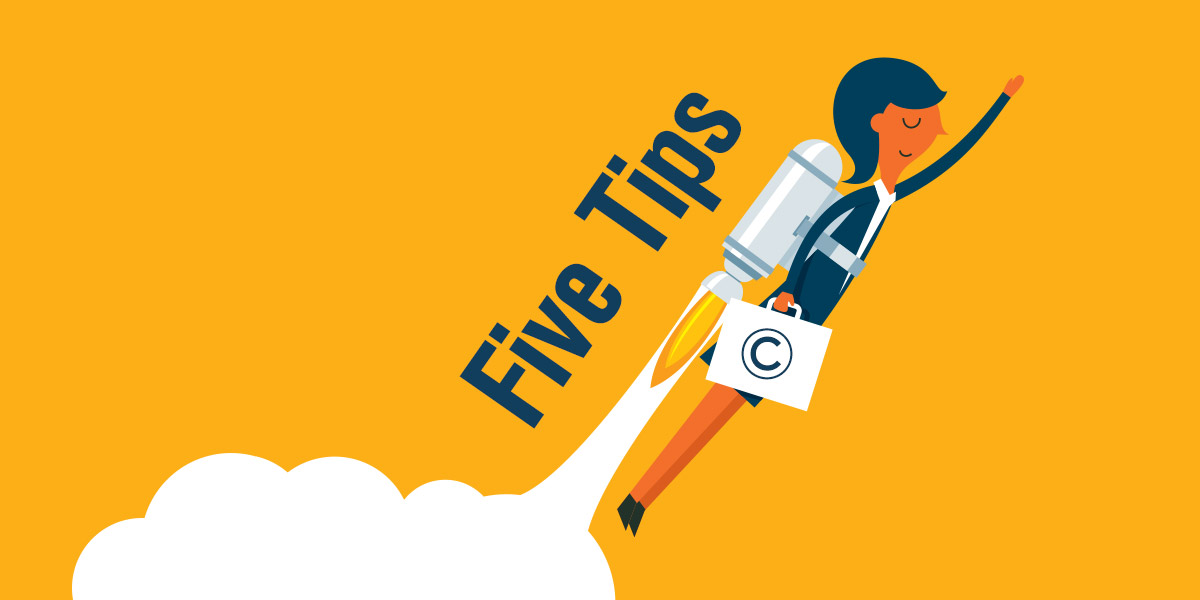
Have you created any copyrighted works?It’s very possible. PR people create lots of content—articles, photos, and videos. And copyright automatically belongs to the creator of that work. That person would be you if you created it on your own. However, if you write an article or take a photograph in the course of your employment, then the copyright would belong to your employer.
And certainly, as a PR professional, you’ve used the copyrighted works of others. We like to call that OPC— “Other’s People’s Content.”
Here are some tips on understanding your rights as a content creator, and how to use OPC within the limits of copyright’s fair use doctrine.

1 Make a fuss: If you see someone using work you have created or own without permission and outside the bounds of fair use, you should say something. Explain that it’s your work and that they can’t use it without your say-so. If they don’t stop, and you feel you are suffering real economic or reputational harm, you may want to consult with an attorney familiar with intellectual property law.The case of Agence France Presse v. Morel is an extreme, and costly, example. Photographer Daniel Morel shot photos of the 2010 earthquake in Haiti. Eight of his images were posted on Twitter by a third party without his permission. Agence France Presse used them and Getty Images distributed them, even after discovering that Morel was the photographer and that he had not granted permission to either organization. Morel claimed that these two organizations had willfully infringed his copyright, and the court agreed. He was awarded $1.2 million in statutory damages; $150,000 for each violation, the maximum under the law.

2 Always check your license: With the Morel lesson in mind, double-check before using photos or any other created work in marketing materials and social media. With regard to images, PR pros often head to Google Images first. If you do, be sure to go to Tools>Usage Rights and choose from among photos that owners have shared for wide use. You’ll still need to follow the rules as defined by the owner. Look for Creative Commons licensed content, which allow creators to easily mark their photos to share and specify the permissible circumstances. Or go directly to Wikimedia, an incredible trove of over 40 million images available for free under defined terms of use. Some marketers looking for the perfect shot prefer to head directly to stock photo services, which charge a fee for each photo based on factors like duration of use, digital vs. print, and expected volume of views. iStock by Getty and Stocksy are two of the many sources of quality images. If custom photos are in your marketing plan and budget, hire a photographer. But just because you paid for a photo session doesn’t mean you have carte blanche to use the photos however you want. Your use will depend on the license you negotiate. Obtaining exclusive lifetime rights will cost more.

3 Incorporate video with care: The online world is flooded with video content. News organizations, TV and movie studios all produce a lot of it, and they don’t take kindly to seeing it in unauthorized places. But even user-generated videos are protected by copyright. Just because it’s on YouTube doesn’t mean you can use it. YouTube’s Copyright FAQs provide full and clear explanations around:
a. How to find out if the copyright on a work has expired, making it available for use;
b. The need to get copyright holder permission before making a derivative work;
c. How to find video content that has Creative Commons licenses; and
d. How to use YouTube’s messaging feature to make inquiries of content owners.

4 Mind your GIFs and memes: GIFs are popular and engaging, but a bit tricky from a copyright standpoint. As of now, there is no U.S. case stating that GIFs infringe on copyright, nor any that assert they do not infringe. Yet, the principles of fair use seem to provide a reasonable argument for the legality of GIFs. First, the purpose of a GIF is often parody, which is a permissible use. Second, distributing a GIF is not likely to undermine the market for the original work, thus causing the creator to incur a financial loss. Think about it: If somebody wants to watch Anderson Cooper’s show on CNN, they aren’t likely to be satisfied with the GIF of his infamous eye roll instead. Finally, when a GIF is based on video, it’s almost always a very small portion of the whole work. That’s not to say that studios and other content owners won’t try to enforce their rights as GIFs become bigger business, but to date, we can’t cite examples of anyone landing in hot water because they used GIFs from Giphy or Imgur.

5 Choose mindful media monitoring: We all access so much news from broadcast and online sources, it’s sometimes hard to remember that content is not free. But it’s not. The media is supported by advertising, subscription, and distribution fees. That’s as true of nytimes.com as it is of the ABC World News Tonight broadcast. All of it is copyrighted content. When you reproduce, republish, or redistribute, you could potentially deprive that media outlet of income and possibly violate the fair use doctrine.
Historically, media monitoring has fallen within fair use because of its limited scale. PR professionals are interested in the excerpt of articles or segments that mention their company, and they’ll share those excerpts for internal business use. But if you email an entire article or video segment to many people, you could run afoul of the rules and the copyright owner.
Media monitoring companies can help you color within the copyright lines as long as they offer a service that’s attentive to copyright.
At Critical Mention, we’ve devised our platform to be convenient for PR professionals and mindful of the obligation not to deprive content owners of revenue. Our password-protected platform offers access to limited length broadcast clips rather than unlimited downloads and distribution. And we watermark broadcast clips “for internal use only.” Our online news monitoring provides excerpts and a link that takes you back to the publisher’s site, rather than serving up the full text of articles for download. We provide all the content you need, fast and compliant.








